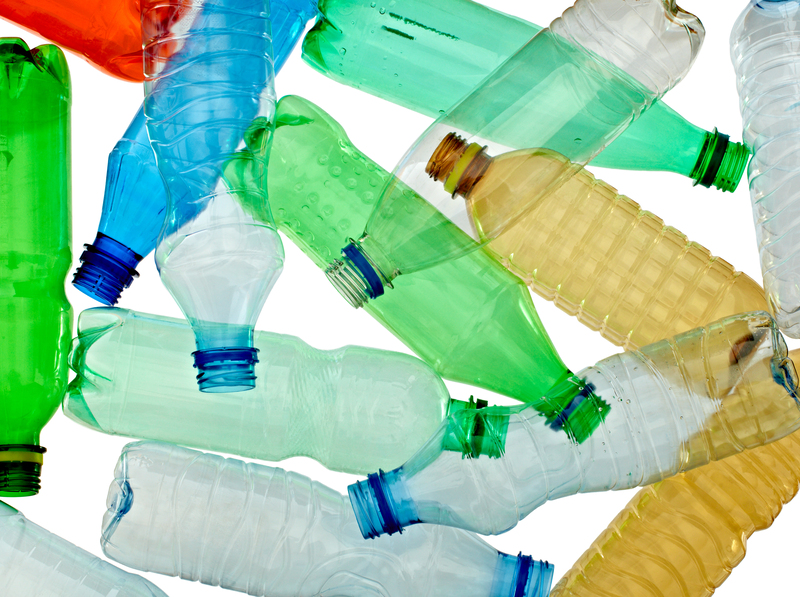A Step-by-Step Guide to Recycling Your Pots and Pans
Recycling household items is a vital aspect of environmentally friendly living, but when it comes to kitchen tools, recycling pots and pans can be confusing. Are they recyclable at the curb? Do you need to disassemble them? Is donating a better option? In this comprehensive guide, we'll walk you through how to recycle old cookware responsibly and provide actionable steps to ensure your unused pots and pans are given a new life.

Why Should You Recycle Pots and Pans?
Recycling used cookware is about more than just freeing up cabinet space. By ensuring your old pots and pans are properly recycled, you help:
- Reduce landfill waste: Metal cookware takes decades--sometimes centuries--to decompose.
- Conserve raw materials: Recycling metals reduces the need for mining new resources.
- Lower greenhouse gas emissions: Repurposed metals require less energy than producing metals from scratch.
- Support local economies: Recycling helps create jobs in your community.
Given all these benefits, it's vital to know exactly how to recycle pots and pans successfully.
Understanding the Types of Pots and Pans
The first step is identifying what your cookware is made of. Most household pots and pans fall into these categories:
- Stainless steel
- Copper
- Cast iron
- Aluminum
- Non-stick (Teflon-coated or ceramic-coated)
Each type has a different process when it comes to recycling old cookware.
What Condition Are Your Pots and Pans In?
Assess the usability of your pots and pans before moving straight to recycling. Sometimes, donation or repair is the most eco-friendly step.
- Good Condition: If the cookware is still usable, consider donating your pots and pans to a local thrift store, charity, or shelter.
- Damaged/Unusable: For warped, scorched, or irreparably damaged cookware, recycling is the answer.
Step 1: Clean Your Pots and Pans Thoroughly
Recycling centers usually request that all items be clean and free from food waste or grime. Wipe down your cookware with soapy water, and attempt to remove any stuck-on residue. If your pan is especially greasy or stained, try using a mixture of baking soda and vinegar for a thorough clean.
Step 2: Remove Non-Metal Components
Handles made of wood, plastic, or rubber must be removed before recycling your pots and pans. Metal recycling facilities typically want pure metal items for processing. Use a screwdriver or pliers to detach these components if possible. If your cookware has glass lids, be aware that glass is recycled differently and should be separated.
Special Note on Non-Stick and Coated Pans
Non-stick coatings can complicate the recycling process. Many facilities cannot accept Teflon-coated cookware because of the chemical treatment. If your local center can't process them, check the manufacturer's website or the cookware's warranty--some brands offer take-back programs for non-stick items.
Step 3: Identify Local Recycling Options
It's essential to check the specifics of your local recycling program before dropping anything in your recycling bin. Most curbside pick-up programs do not accept pots and pans because of their size, weight, and potential for jamming machinery.
Where Can You Recycle Pots and Pans?
- Scrap metal yards: These facilities are best equipped to handle metal cookware.
- Special recycling events: Many municipalities host household hazardous waste days or metal collection events.
- Retail take-back programs: Some retailers and cookware brands accept old items when you purchase new ones.
- Donation centers: If the cookware is usable, it's often welcomed by charities or thrift stores.
Search online for "metal recycling near me" or check resources like Earth911 to find the most convenient options.
Step 4: Prepare Your Cookware for Drop-off
After contacting your local facility or drop-off point, they'll let you know what they accept and how items should be prepared. If you're taking your pans to a scrap metal yard, sort them by metal type if possible (stainless steel, aluminum, copper, cast iron). Keep non-stick pans separated if they're accepted.
Label your materials if requested, and always follow any instructions given by the recycling facility staff.
What About Pots and Pans with Multiple Materials?
Some premium pots and pans are constructed using different types of metals (e.g., copper cores, stainless steel exteriors, aluminum handles). If you cannot reasonably disassemble these components, indicate this to your recycling center--they may still be able to process the item as "mixed metal." If parts are primarily plastic or wood, it may not be recyclable as scrap metal, but always ask before discarding.
Step 5: Drop Off & Celebrate Responsible Recycling!
Bring your ready-to-recycle pots and pans to the scrap yard, recycling event, or designated drop-off point during their business hours. Most places will weigh your metal and may offer a small cash return for certain metal types, such as copper or aluminum. Remember, the true reward is knowing you've helped reduce waste and preserve resources!
Alternative Options to Recycling Pots and Pans
If recycling isn't convenient or available in your area, there are other ways to prevent cookware from heading to the landfill:
- Upcycling: Use damaged pots and pans as plant containers, storage bins, or artistic decor pieces.
- Donation: Give serviceable cookware to organizations that help those in need.
- Repair: Some hardware stores can replace handles or refurbish well-made pots and pans for continued use.
- Online Marketplaces: Offer your old cookware on platforms like Freecycle, Craigslist, or Facebook Marketplace for free or low cost.
Get creative! Repurposing a dented saucepot into a garden planter or turning a frying pan into a clock can be a fun and eco-friendly project.
Frequently Asked Questions About Recycling Pots and Pans
Can I put pots and pans in my curbside recycling?
No. Most curbside programs do not accept large metal items. Pots and pans can jam machinery at sorting facilities, so always use approved scrap metal recycling centers instead.
What about non-stick or Teflon-coated cookware?
Many standard metal recycling centers do not accept non-stick or coated pans due to chemical treatments. Look for specialized recycling programs, municipal hazardous waste events, or manufacturers that offer recycling take-back programs.
Is there any cookware that cannot be recycled?
Cookware with a high proportion of non-metal parts, such as glass, ceramic, or heavy plastic components, can be difficult to recycle. In such cases, consider upcycling or proper disposal through municipal waste streams.
How much money can I get for recycling my metal cookware?
Scrap value depends on the metal type, weight, and current metal prices. Stainless steel, copper, and aluminum are generally more valuable than iron, but the payout is usually minimal for household cookware. The environmental impact is the main reward.

Tips for Sustainably Disposing of Pots and Pans
- Purchase quality cookware: Investing in long-lasting pots and pans reduces replacement frequency.
- Avoid single-use items: Opt for durable, multi-purpose kitchenware.
- Maintain your cookware: Proper cleaning and care extend the life of pans and pots.
- Support sustainable brands: Many cookware brands now offer recycling programs or eco-friendly products made from recycled materials.
Remember: The most sustainable option is to reuse, repurpose, and repair before recycling.
Summary: Giving New Life to Old Cookware
Properly recycling pots and pans isn't just about tossing them in the bin--it's a responsible process that protects our environment and conserves resources. Start by assessing the condition, removing non-metal components, researching local recycling options, preparing your items, and leveraging alternatives like upcycling or donation whenever possible. By following these step-by-step recycling tips for cookware, you'll ensure your old pots and pans continue to be useful--just in a different form!
Ready to take action? Clean out your cabinets with confidence, knowing your unwanted cookware will be handled in the most eco-friendly way possible. Make recycling a habit, and inspire others in your community to do the same!
